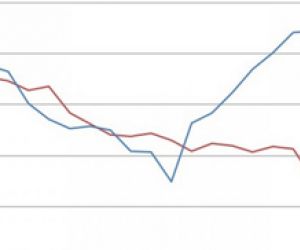Introductions, Part II

Bob Babcock stops by City Hall, unannounced, to discuss yesterday’s meeting. We’ve never met, and exchange brief “how we got here” bios. He scans my bookshelf and makes some assumptions.
I tell him I try not to use the “P word”. The Council was courageous to put an initiative on a ballot in 2008, and then – per law – could not advocate for the initiative. With no organized support, the initiative was defeated. Years pass and Mr. Babcock walks in, unscheduled, with questions about the Kalamazoo Promise. The answers?
Kalamazoo is a slightly smaller Midwest manufacturing city with a river, affluent suburbs and two decades of school enrollment decline prior to 2005. However, after the Kalamazoo Promise was announced in 2005, Kalamazoo student enrollment decline came to a halt. Since 2005, the Kalamazoo School District has grown by 2,357 students. This growth in Kalamazoo occurred while Michigan, hit exceptionally hard by the Great Recession, lost more than 200,000 residents. Iowa has grown by more than 80,000 residents in the same time frame and, while the city of Davenport has grown modestly, the Davenport Community School District’s multi-decade enrollment decline trend has continued with a reduction of more than 500 students since 2005.
The smaller district in the shrinking state grew by more than 2,300 students while the larger district in the growing state shrank by more than 500 students. Anyone in the media, anytime over the past several years, could have spent ten minutes Googling what became of Kalamazoo and reported their clear success. But that doesn’t happen. It is little wonder why Mr. Babcock or anyone else in Davenport has no idea there is a fully tested solution to reversing enrollment decline. Bad news grabs your attention. Good news is boring.
If Davenport enrollment had grown at the same rate Kalamazoo experienced, there’d be more than $22 million in new annual state revenue for the Davenport Community School District and less local taxes weighing down the Quad Cities economy. There would also be a stronger regional workforce, better prepared to compete in a global economy. That ain’t so boring.

